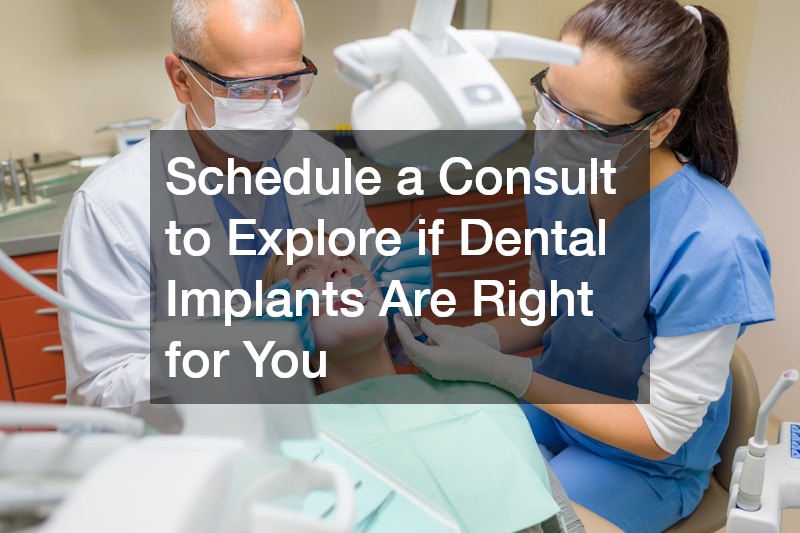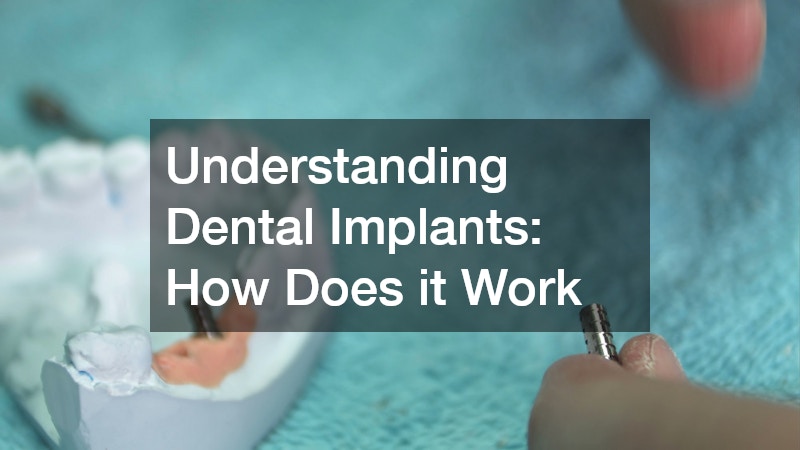
In this comprehensive guide, we will delve into the fascinating world of dental implants, exploring how they work, their benefits, and what you need to know before considering them as an option for replacing missing teeth. Whether you’re dealing with a single missing tooth or multiple gaps, dental implants offer a modern, reliable solution that mimics the look and function of natural teeth.
What Are Dental Implants?
Definition and Components
Dental implants are surgically placed artificial tooth roots that provide a permanent foundation for fixed or removable replacement teeth, which are designed to match your natural teeth. They are typically made from biocompatible materials like titanium, which integrate seamlessly with the body.
The main components include:
- Implant post: A small, screw-like titanium post inserted into the jawbone to act as the root.
- Abutment: A connector piece that attaches the implant post to the replacement tooth.
- Crown: The visible, custom-made artificial tooth that attaches to the abutment for a natural appearance and function.
These elements work together to create a stable, durable structure far superior to traditional replacements.
Types of Dental Implants
There are several types of dental implants tailored to different patient needs and jawbone conditions:
- Endosteal implants: The most common type, these are placed directly into the jawbone and resemble small screws or cylinders. They’re ideal for patients with sufficient bone density.
- Subperiosteal implants: Placed under the gum but on top of the jawbone, these are used for patients who cannot wear conventional dentures or lack enough bone height for endosteal implants.
- Zygomatic implants: Longer implants anchored in the cheekbone (zygoma) rather than the upper jawbone, suitable for those with severe bone loss in the upper jaw.
Choosing the right type depends on factors like bone quality and the number of teeth being replaced.
Comparison with Other Tooth Replacement Options
Dental implants stand out from alternatives like dentures and bridges in both durability and aesthetics. Dentures are removable appliances that rest on the gums, often causing slippage, discomfort, and accelerated bone loss over time. Bridges, meanwhile, require grinding down adjacent healthy teeth for support, which can lead to further dental issues. In contrast, dental implants are fixed in place, promoting jawbone health by stimulating it like natural roots, offering a lifespan of 15-25 years or more, and providing a seamless, natural look without altering neighboring teeth. They also enhance chewing efficiency and speech clarity far better than removable options.
How Do Dental Implants Work?
Osseointegration Process
At the heart of dental implants is osseointegration, a biological process where the titanium post fuses with the surrounding jawbone over several months. This integration creates a strong, stable anchor, mimicking the function of a natural tooth root and preventing bone resorption that occurs with tooth loss.
Surgical Procedure and Recovery
The dental implant procedure is typically an outpatient surgery performed in stages under local anesthesia, sedation, or general anesthesia. It begins with extracting any damaged teeth, followed by preparing the jawbone—often including a bone graft if the bone is too thin or soft. The implant post is then drilled into the bone, and the site is left to heal for 3-6 months to allow osseointegration. A minor surgery follows to attach the abutment, after which the gums heal for about two weeks before the crown is affixed.
Recovery involves some swelling, bruising, minor bleeding, and discomfort, managed with pain relievers and antibiotics. Patients should stick to soft foods and avoid strenuous activity for a few days, with full healing taking several months. Most return to work within a day or two.
Longevity and Maintenance
With proper care, dental implants can last a lifetime, boasting success rates above 97% over 10 years. Maintenance mirrors natural teeth: brush twice daily, floss around the implant, use interdental brushes, and schedule regular dental checkups and cleanings. Avoid habits like smoking, which can impair healing, or chewing on hard objects that could damage the crown.
Who is a Good Candidate for Dental Implants?
Health and Bone Density Requirements
Ideal candidates have healthy oral tissues, sufficient jawbone density to support the implant, and no chronic conditions that hinder bone healing, such as uncontrolled diabetes or active periodontal disease. Non-smokers fare best, as tobacco use increases failure risk. Bone grafts can address density issues, making implants viable for many.
Age Considerations
Dental implants are suitable for adults whose jawbones are fully developed, typically those 18 and older. There’s no strict upper age limit—healthy seniors can benefit greatly—but younger patients may need to wait until growth is complete to ensure stability.
Consultation and Evaluation Process
The process starts with a comprehensive exam, including X-rays, 3D imaging, and jaw models to assess bone structure and overall oral health. Your dentist reviews medical history, discusses lifestyle factors, and crafts a personalized plan outlining the number of implants, timeline, and any preparatory steps like grafts.
What Are the Benefits?
Advantages of Dental Implants
Dental implants offer transformative benefits, including enhanced chewing and speaking abilities, a natural smile that boosts confidence, and preservation of jawbone structure to maintain facial contours. They improve overall oral health by not relying on adjacent teeth and resist decay, unlike natural teeth or bridges.
Dental implants have transformed the landscape of dental restoration, offering a reliable solution for those seeking to replace missing teeth. Understanding how they work, who they’re suitable for, and their benefits and costs can help individuals make informed decisions about their dental health. Consult a specialist to explore if dental implants are right for your smile.


